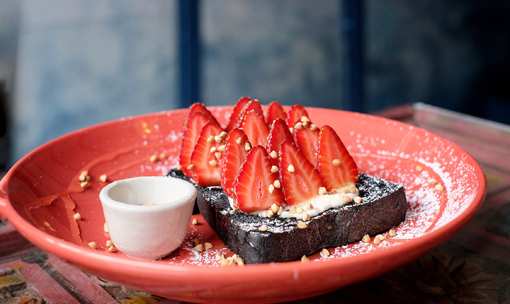About Us:
If you ever find yourself looking for a quiet place to reflect in Wilmington, you’d be hard-pressed to find a better setting than Marian Coffin Garden. Lavishly sprawling on the grounds of the now empty Gibraltar estate, the gardens are soul cleansing to behold.
When Hugh Rodney Sharp and his wife, Isabella Mathieu du Pont Sharp, purchased the Gibraltar estate in 1909, it was already a sweeping 19th-century mansion with about 80 acres of impressive landscaping. Sharp sought to expand the home, adding several three and two-story wings to the east and west, a conservatory, a carriage house, a greenhouse, a swimming pool, and most importantly, an elaborate garden.
Enter Marian Cruger Coffin, an ambitious young woman with a passion for landscape architecture. Born in 1876 to a wealthy upper-class family, Coffin’s father died when she was only seven years old, leaving her and her mother dependent on their extended family for support. Nurturing independence and love for landscaping, Coffin applied to the Massachusetts Institute of Technology, one of only a handful of colleges that would accept women. Having had no formal education, she was initially rejected due to incompetencies in some subjects such as mathematics. Coffin applied herself rigorously to remedial coursework and applied again, being enrolled in 1901 as one of only four women in the entire college.
Challenged by some of the brightest minds in horticulture and landscaping, Coffin sought inspiration from an eclectic range of styles from all over Europe. After college, Marian Coffin’s career began rather slowly, as the field of landscape architecture was primarily and frustratingly exclusive to men. She was not accepted at any of the architectural firms in New York City and decided to open her own firm in 1905, to great success.
Starting with relatively small suburban flower gardens, Coffin made a name for herself as an imaginative, fresh, and dynamic architect, bringing an unprecedented flair to landscape design. She hired men and women, making a point to give women a chance to prove themselves in a male-dominated field. In 1916, Hugh Sharp awarded Coffin the contract to design the Gibraltar estate gardens, electing the Italianate Beaux Arts style, envisioning each area as a room or hallway in an outdoor mansion of its own.
Coffin designed the garden as a series of terraces leading from the estate on the top of the rocky hill, down to the flower garden by a curving marble staircase. Each terrace has a unique theme or element, cascading through a colorful and artistically selected arrangement of flowers, shrubs, and trees. Primary elements create focal points in each area of the garden. Statues from all over the world are enshrined in flowers. A large tea house, through its high colonnaded archways, looks out at upon a peaceful expanse of colorful flowering bushes along a row of cypresses.
Sadly, the estate and its garden slowly deteriorated after the deaths of both Hugh and Isabella Sharp. Isabella passed in 1946, Hugh in 1968. Their estate fell into the hands of Hugh Rodney Sharp Jr., who did not share his parent’s love of the gardens. The estate went many years without the necessary maintenance to keep the gardens free of weeds and pests, and by 1990 a badly overgrown shell remained of Marian Coffin’s vision.
The house, too, was in a state of disrepair after Hugh Jr.’s death and was recommended for demolition by 1998. Preservation Delaware, with the backing of the community and the Sharp family, stepped in and saved the entire estate, facilitating its purchase and restoration. Although the new owners of the Gibraltar Estate have not managed to restore the house itself, Preservation Delaware started a massive restoration project on the garden in 1999 and continues to maintain it today.
Open to the public year-round, the gardens, now renamed the Marian Coffin Garden, is the closest recreation of Coffin’s vision. Preservation Delaware used painstaking precision in repairing the weather-worn statues, replacing weeds with the original plants whenever possible, and restoring the beautiful flagstones and marble stairs throughout. Finally, the swimming pool was converted into a beautiful lotus pond, supporting local wildlife like dragonflies and frogs. The dynamic brilliance of Marian Coffin’s work now stands available for all to wonder and enjoy.
The Marian Coffin Garden not only represents part of the historical heritage of Delaware, but the passion and diligence of a woman struggling to break free of standard gender roles in pursuit of her dream. Against the odds, Marian Coffin achieved her dream in the face of tradition, just as the gardens stand against time and decay with the help of an impassioned group of people just like you. Get involved in your local history. Help Preservation Delaware keep the inspiring stories of heroes like Marian Coffin alive.






